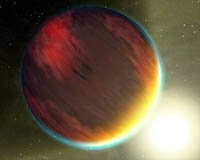
Planets like Earth form via collisional accumulation of smaller bodies in circumstellar disks. However, there exist systematic differences between the formation environment of Earth-like planets around other stars and that of the Solar System. For example, short-lived radionuclides (SLRs) like 26Al were an important heat source in the Solar System and may have been derived from a nearby supernova. However, SLRs have variable abundances in protoplanetary disks because of orbital variations within stellar clusters which determine the proximity to supernovae. The quantity of SLRs can be directly tied to the water abundance of terrestrial planets. In addition, the habitable zones of low-mass stars are very close-in, which affects the ability of habitable planets to have large masses or retain water, and can also cause large orbital changes via tidal dissipation. About 60 “hot Jupiters” are currently known; these giant planets likely formed farther from their stars and migrated inward through the habitable zone. Ocean-covered planets are often able to form in the “wake” of a migrating giant planet.
 Getting Under Europa’s Skin
Getting Under Europa’s Skin Tracing Formation and Evolution of Outer Solar System Bodies Through Stable Isotopes and Noble Gas Abundances
Tracing Formation and Evolution of Outer Solar System Bodies Through Stable Isotopes and Noble Gas Abundances Photosynthesis, a Planetary Revolution
Photosynthesis, a Planetary Revolution Xenon: King of the Gases
Xenon: King of the Gases